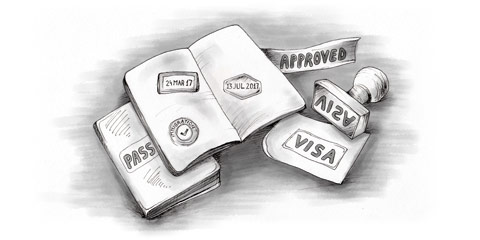This is well suited to those who cannot, or don’t wish to, apply for citizenship and will officially change your status to ‘inmigrante’ however you will still need to pay the yearly foreigners tax on what you earn. One of the benefits of this visa is that you will not have to renew your carne de extranjeria every year.
Requirements for obtaining an immigrant visa
Fill out the following steps and take the necessary document to your local Peruvian embassy:
- Make sure form F004 is filled out
- Provide a copy of your passport as well as your carne de extranjeria.
- Provide proof that you have not left Peru for more than 3 consecutive months within a year.
- Make sure you have relevant documents confirming your INTERPOL, or relevant police authority background check.
- Make sure your Prorroga de Residencia has been paid for
- Present your first and most recent payslips in the country.
Costs and conditions
Processing times for an immigrant visa are 6 to 8 weeks and the processing fee for obtaining the visa is around US$380. All holders of this visa will be able to work legally in Peru. This is a permanent visa to reside in the country and holds no expiry date.
To be eligible to apply you must not have spent 3 consecutive months, or six non-consecutive months outside the country in any one year.
If you are in Peru on a marriage or family visa you will have to provide some additional documentation:
- Original marriage certificate - if it’s not in Spanish it will need to be translated and apostilled.
- Copy of your spouse’s DNI
- Original birth certificate of your children (if your visa is through them) - again needs to be translated and apostilled if from outside Peru.
- Copy of your children’s/parents’ DNI or passport if your visa is through them

